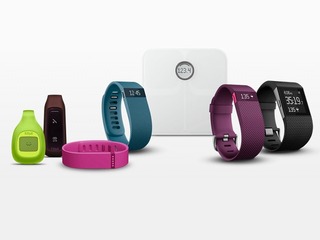DrFirst buys prior authorization automation platform Myndshft
This will allow DrFirst to accelerate its growth in the specialty medication space
Read more...Fitbit, Jawbone, Moov, Garmin, and more--it's 2015 and the fitness tracking space is rife with competition. And yet, among all the diverse set options, from the athletic to the luxurious, we’re seeing less expansion horizontally: into other forms of measurement beyond step and sleep tracking.
Here’s a company changing that.
Skulpt, creator of a device for measuring body fat percentage and muscle quality, today announced that it had raised $4.1 million in a Series A funding round led by Nautilus Venture Partners, with participation from Caerus Venture Partners. Caerus led Skulpt’s $1.6 million seed round last year.

Impressively, Skulpt first got its footing in 2013 (four years after its founding) through a crowdfunded campaign on Indiegogo.
“The Indiegogo community put us on the map two years ago when we launched our first product, the Skulpt Aim,” said Juan Jaramillo, VP of Product for Skulpt.
A $199 bundle including the device itself, a charging cradle, travel pouch, and spray water bottle, the waterproof Skulpt Aim promises to precisely measure fat percentage and muscle quality of individual muscles.
Last week Skulpt unveiled the Chisel, a "leaner, lighter and more affordable" version of the Aim, which won a CES 2016 Innovations Award. The Chisel, which is $99 for a limited time on Indiegogo but will be priced at $149, does everything the Aim does without the need for a screen, improving battery life. Instead, the device just does the muscle measuring, leaving reporting and results for the app screen on your mobile device (be it Android or iOS).
The company claims its devices to be five times more accurate than today's most common handheld devices for measuring body fat, like this $40 Omron Fat Loss Monitor.
The difference is technical but significant. Skulpt uses electrical impedance myography (EIM), not bioelectrical impedance analysis (BIA), which is used by most common devices today, including the Omron monitor linked above.
“Although the technology is improving, it's difficult to get an accurate body fat measurement from most commercially available body fat analyzers,” writes Edward R. Laskowski, M.D. for Mayo Clinic.
But Laskowski is talking about BIA, which Skulpt says can be affected by hydration, eating habits, deep veins, and body composition. EIM, the company claims, removes these inconsistencies.
The added bonus of Skulpt’s devices, of course, are the bells and whistles we’ve come to expect from any modern-day fitness tracker. The device can be controlled from the app, which is also where results appear in a "heat map" of the body indicating strong muscles and muscles that could use work. As you continue using the Chisel, you can also track your progress in the app or in Apple Health with charts for total body fat and muscle quality.
The interesting thing about Skulpt is that it straddles a line, neither depending entirely on crowdfunding or venture capital funding. Though it acquired initial traction and an excited customer base through Indiegogo, it has also taken extra steps toward expansion by engaging with VCs. The company says its new financing will help Skulpt devices expand into retail next year.
This will allow DrFirst to accelerate its growth in the specialty medication space
Read more...The company initially raised $3 million in seed funding when it launched in October
Read more...This is the company's first fundraising since 2019 and brings its total capital to $103M
Read more...
